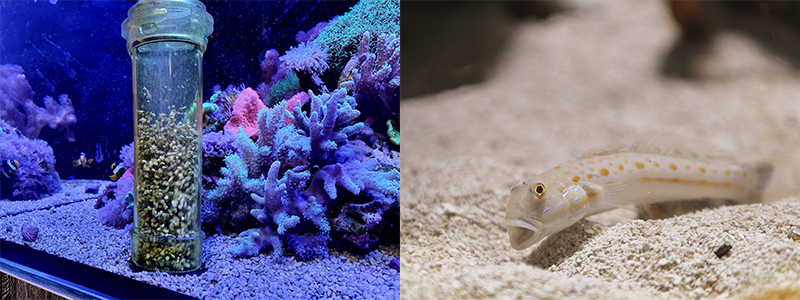Do you want to know which fish species and how many of them can be kept in your 40-gallon aquarium? There’s nowhere else to look! You’ll learn the ideal quantity of fish to maintain in this article, along with the best freshwater species for your aquarium.
A 40-gallon tank is a great option for beginners because it provides plenty of room for decorations and aquatic plants. Vibrant fish species like guppies, tetras, and Cory catfish can thrive there with the right filtration and upkeep.
Thus, let’s explore what are the best freshwater fish for a 40 gallon tank and how to set up a 40 gallon tank!
Disclosure: This article contains affiliate links. When you follow a link to purchase the products, I sometime earn a commission, at no additional cost to you. Read my full disclosure here
12 Best freshwater fish for 40 gallon Tank
1. Guppy
Number of Fish: 20-30
Originally from South America, these colorful little fish are also referred to as million fish. They are frequently selected for their ability to bring color to any tank and for their fabled breeding habits. Diverse tail shapes, such as veil, delta, and fan tails, are characteristic of guppies, which can enhance the visual appeal of your aquarium. They are ideal for novice hobbyists because they can be adjusted to a variety of water conditions.

2. Betta
Number of Fish: 12-15 female betta and 1-2 males
Native to Southeast Asia, these eye-catching fish are also referred to as Siamese fighting fish. While male bettas must be kept apart to prevent conflicts, female bettas can frequently coexist peacefully in groups despite their reputation for aggression. Because of their labyrinth organ, which allows them to breathe air from the water’s surface, bettas can be kept in a variety of tank configurations.
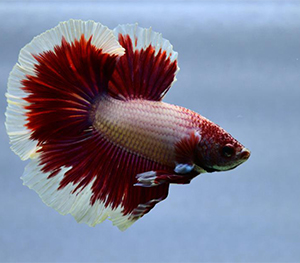
3. Trout Goodied
Number of Fish: 3-5
The trout goodeid, a small livebearer from Central America resembling a miniature trout, is a rare yet unique stocking choice. They thrive in higher pH and GH levels but prefer cooler temperatures below 72°F. They’re not picky eaters, happily consuming flakes, pellets, and even hair algae. While they can coexist with other fish, observing their unique behaviors in a single-species colony is rewarding.
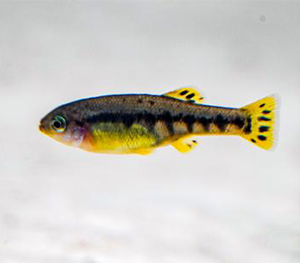
4. Cory Catfish
Number of Fish: 10-12
Also known as Corydoras, these lovable bottom-dwellers are native to South America. In addition to being superb algae eaters, they exhibit a distinctive behavior known as the “Cory wiggle” when they get excited. A soft substrate is preferred by cory catfish in their tanks because they like to sift through it with their barbels. Plant tanks with lots of hiding places are ideal for them.
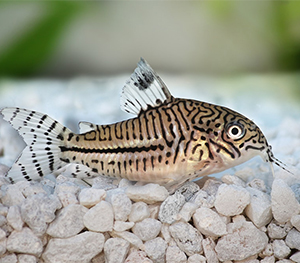
5. Zebra Fish
Number of Fish: 16-20
Native to South Asia, zebrafish are distinguished by their vivid stripes and vivacious nature. Because of their transparency in the early stages of development, they have been thoroughly studied in scientific research, which makes them useful in genetics and medical research. Being omnivores, zebrafish take pleasure in a variety of foods, such as flake food, live food, and plant material.
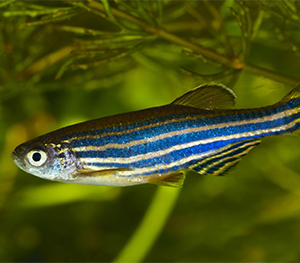
6. Mollies
Number of Fish: 15-20
Originally from the Americas, these graceful fish breed a lot and frequently give birth to live offspring rather than eggs. Mollies give visual interest to your tank because they come in a variety of colors and fin shapes, such as sailfin and lyretail. They prefer an aquarium that is well-aerated, has lots of swimming areas, and has hiding places among plants.
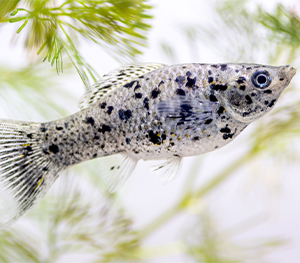
7. Goldfish
Number of Fish: 2
With a history spanning more than a millennium, goldfish are among the oldest species of aquarium fish known to science, having originated in China. With the right care, they can live up to 20 years or longer, making them enduring companions. Although fancy varieties of goldfish may require solitary accommodations because of their delicate fins, goldfish are amiable creatures that thrive in groups.
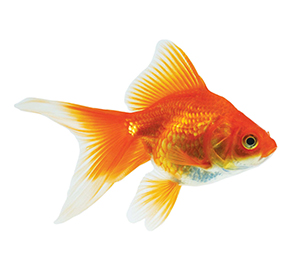
8. African Cichlid
Number of Fish: 1-2 male and 4-5 female
The Saulosi cichlid is a diminutive African cichlid native to Lake Malawi, with a maximum length of approximately 3.5 inches. Males and females have distinct appearances, with males having blue stripes and females having bright yellow ones, making them visually striking.
It is ideal to have 1-2 males and 4-5 females in a 40-gallon tank. For hiding, they require a lot of rocks and a high pH. Because the females frequently carry the eggs in their mouths, they are simple to breed. Add these colorful cichlids to your tank if you want bright colors.
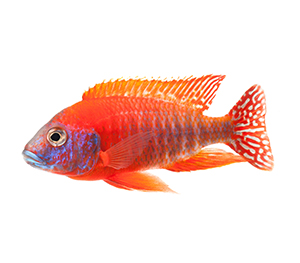
9. Neon Tetra
Number of Fish: 20-30
Originating from South America, neon tetras are distinguished by their vivid red and blue coloring. They are a mainstay of the aquarium hobby and are frequently picked because of their calm demeanor and obedient nature. Soft, slightly acidic water is preferred by neon tetras, who do best in heavily planted tanks with dim lighting.
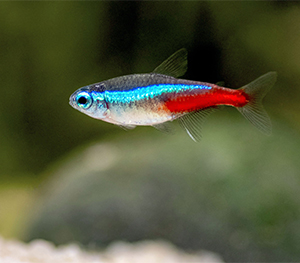
10. Bolivian Rams
Number of Fish: 8-10
Taking their name from their home country, these eye-catching Bolivian rams are native to South America. They do well in planted tanks with driftwood and leaf litter because they like slightly acidic water (pH 6.0 to 7.5). Since Bolivian rams are peaceful shoaling fish, it is best to keep them in groups so they feel safe and comfortable.
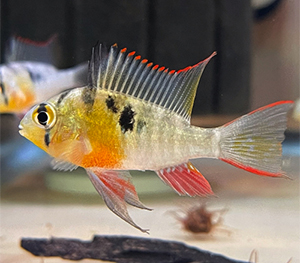
11. Three Spot Gourami
Number of Fish: 8
The name “Three Spot Gourami” refers to the dark patches on the bodies of these elegant, Southeast Asian labyrinth fish. They are renowned for their capacity to produce “croaking” noises, particularly when engaging in mating rituals. After all, Three Spot Gouramis are the habitants of slow-moving streams and ponds, so they like calm waters with lots of vegetation and soft lighting.
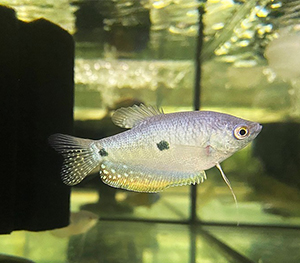
12. The Flowerhorn Tank
Number of Fish: 1
The Flowerhorn cichlid is distinguished by its vivid colors and pronounced hump on the males’ heads. In some Asian cultures, they are highly valued for their ability to bring prosperity and good fortune. Flowerhorns tend to be aggressive towards their smaller tankmates, but they can also be playful and friendly towards their owners.
To prevent confrontations, it’s advisable to keep them apart in a 40-gallon tank. To keep the water clean as they get bigger, they’ll need more food and frequent water changes. When they reach adulthood, think about switching to a bigger tank, such as a 55- or 75-gallon one.
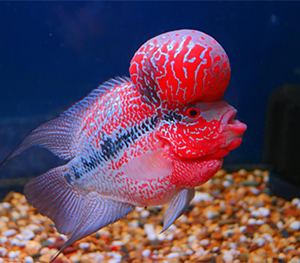
What are the Equipments Needed for a 40 Gallon Tank?
- Heater: The health of your fish depends on keeping the temperature in your tank at the proper level. By maintaining a constant temperature in the water, a heater shields your fish from unexpected temperature swings. A thermostat is frequently included with modern heaters to automatically adjust the temperature.
- Lights: The growth of bacteria, plants, and fish in your tank depends on adequate lighting. It keeps fish in stable daylight cycles and aids in the photosynthetic processes of plants. On the other hand, excessive light can promote the growth of algae, and insufficient light can harm your fish.
- Gravel Cleaner: This instrument removes waste and debris from the substrate (gravel) in your tank, assisting in the preservation of water quality. It has a long tube with a wide end to catch debris and a hose to remove soiled water by siphoning it out.
- Magnetic Sponge: An algae scraper with a magnetic handle outside the tank and a scrubbing pad attached to it. The scrubbing pad can be moved along the inside of the tank to get rid of algae buildup from the walls by gliding it with the external magnet.
How to Set Up a 40 Gallon Tank?
Step 1: Configuring the Equipment and Tank
After thoroughly cleaning the substrate to get rid of any dust, distribute it evenly throughout the tank. Install your appliances, such as heaters and filters, to keep the water flowing well. After adding water to the tank, sparingly add plants and decorations so that your fish have plenty of room to swim.
Step 2: Tank Cycling
The health of the fish depends on tank cycling. It takes 4–8 weeks for the good bacteria to proliferate and begin decomposing the bad stuff. When it’s safe to add fish, test kits can help monitor ammonia and nitrite levels.
Step 3: Adding Fish
Fish should gradually adapt to their new surroundings when added. After adding a cup of tank water every ten minutes, let the bag float in the water for twenty to thirty minutes. After transferring the fish into the tank with a net, dispose of the bag water.
These steps guarantee your fish a smooth transition and a wholesome habitat in which they can flourish.
Conclusion
In conclusion, it’s a great idea to start your freshwater aquarium with a 40-gallon tank. You can build a beautiful setup that you can enjoy for years with the correct fish and accessories. But it’s important to think about how much waste your fish produce and make sure your filter can handle it.
Additionally, keep in mind that giving each species plenty of swimming space will help to reduce stress and aggression. You can provide your fish with a healthy, peaceful aquatic environment by keeping these things in mind.



